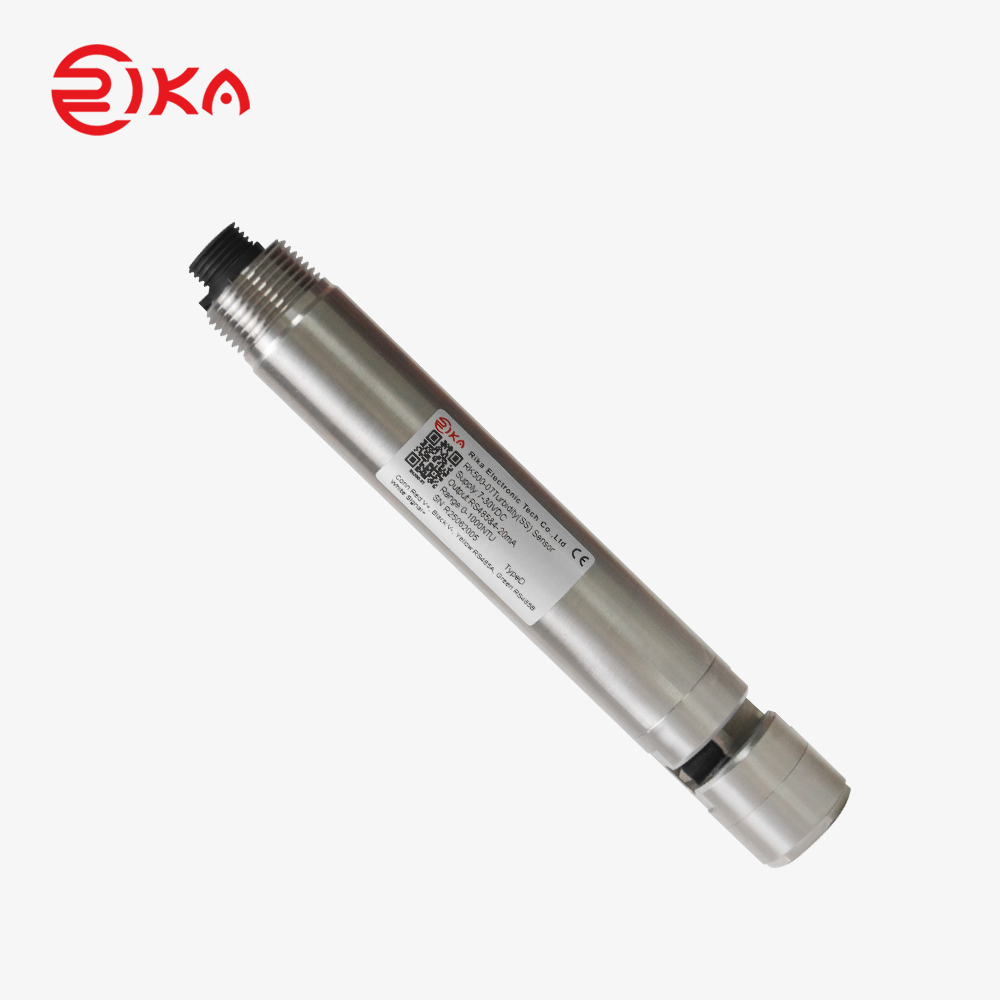Enhancing Water Quality Monitoring Through Advanced Water Turbidity Sensors
The clarity of water is more than just a visual characteristic—it is a direct indicator of environmental health, public safety, and industrial efficiency. Suspended particles, organic matter, and microorganisms all influence the transparency of water, and measuring these factors requires precise instrumentation. A water turbidity sensor has become one of the most dependable tools in this regard, offering accurate and real-time data on water clarity. From municipal treatment facilities to natural ecosystems, these sensors provide critical insights that shape decision-making, compliance, and sustainability.

What is a Water Turbidity Sensor?
A water turbidity sensor is a specialized device designed to measure the degree of cloudiness in water caused by suspended particles. It functions by projecting light into a sample and measuring how much of that light is scattered by particles such as silt, algae, or organic debris. The results are typically expressed in Nephelometric Turbidity Units (NTU), a globally accepted measurement standard.
Unlike simple visual checks, turbidity sensors provide quantifiable, repeatable, and standardized results, ensuring consistency across testing environments. These devices are an essential part of modern water quality monitoring systems, enabling operators to track contamination, sediment levels, and overall water conditions with a high degree of accuracy.
Why Monitoring Turbidity Matters
The significance of turbidity goes beyond appearance. Elevated turbidity levels can signal contamination risks, as suspended particles often harbor harmful microorganisms or shield bacteria from disinfectants. In drinking water systems, high turbidity compromises safety, while in wastewater treatment facilities it may indicate inefficiency in filtration or sedimentation processes.
In natural water bodies such as rivers, lakes, and coastal zones, turbidity serves as a key environmental indicator. It reflects erosion, runoff, and biological activity, providing scientists and environmental agencies with crucial data on ecosystem health. For aquaculture operations, consistent monitoring of turbidity ensures optimal living conditions for fish and aquatic species, preventing stress and disease caused by poor water quality.
Working Principles of a Water Turbidity Sensor
water turbidity sensor rely on optical principles to capture changes in light behavior. Most sensors use nephelometry, where a light source is directed into water and the detector measures scattered light at a specific angle. This method is particularly effective for detecting fine particles in relatively clear water.
In higher turbidity ranges, sensors may employ attenuation methods, where light transmission directly through the sample is measured. Advanced designs combine multiple light wavelengths and detection angles to enhance precision across diverse conditions. Modern sensors also integrate digital interfaces, automatic calibration, and wireless connectivity, making them compatible with Internet of Things (IoT) platforms and smart monitoring systems.
Applications of Water Turbidity Sensors
The versatility of water turbidity sensors has driven their adoption across numerous industries and research fields. In municipal water treatment plants, they are indispensable for ensuring compliance with drinking water standards. By providing real-time data, they allow operators to adjust processes such as filtration and disinfection quickly, reducing risks to public health.
In wastewater treatment, turbidity sensors help monitor effluent quality before discharge, ensuring that pollutants do not harm surrounding ecosystems. Environmental scientists rely on these devices for field studies, measuring sediment transport, runoff effects, and river health. Industries such as food and beverage, pharmaceuticals, and paper production integrate turbidity measurement into their quality control processes, guaranteeing consistency and safety in final products.
Aquaculture facilities use water turbidity sensors to maintain healthy aquatic environments, where excess particles can stress or suffocate fish populations. Likewise, construction and mining sites often monitor turbidity in nearby waterways to mitigate the environmental impacts of their activities.
Benefits of Using Water Turbidity Sensors
One of the primary benefits of water turbidity sensors is their ability to deliver continuous, accurate measurements. This real-time data ensures quick responses to sudden changes in water quality. By automating turbidity monitoring, organizations reduce reliance on manual testing, thereby minimizing human error and labor costs.
Durability is another advantage, as many turbidity sensors are designed to withstand harsh conditions, from deep-sea research to industrial wastewater channels. With increasing integration of digital technology, many sensors now support remote monitoring, data logging, and cloud-based analysis, aligning with modern water management strategies.
Challenges and Limitations
Despite their effectiveness, water turbidity sensors are not without challenges. Biofouling, or the accumulation of biological material on the sensor surface, can impact accuracy. Similarly, factors like air bubbles, water color, or extreme temperature variations may influence readings. Regular calibration and maintenance are essential to ensure consistent performance.
Cost can also be a consideration, particularly for advanced sensors with multi-parameter capabilities. However, the long-term savings in compliance, risk reduction, and efficiency usually justify the investment.
The Future of Water Turbidity Sensing Technology
The evolution of water turbidity sensors is closely tied to advancements in digital connectivity and environmental science. Future designs are likely to include self-cleaning mechanisms, enhanced AI-driven data interpretation, and predictive maintenance features. With the global emphasis on sustainability and water conservation, the role of these sensors will continue to expand.
Integration with IoT networks and smart infrastructure will make turbidity monitoring more proactive, allowing real-time adjustments and predictive analytics that prevent issues before they escalate. From large-scale urban utilities to small-scale aquaculture systems, water turbidity sensors will remain at the forefront of water quality management.
Conclusion
Water turbidity sensors are indispensable instruments for modern water quality monitoring. By providing precise and real-time insights into water clarity, they safeguard public health, protect ecosystems, and ensure industrial efficiency. Their applications stretch from drinking water treatment to environmental research, aquaculture, and manufacturing, underscoring their versatility and value.